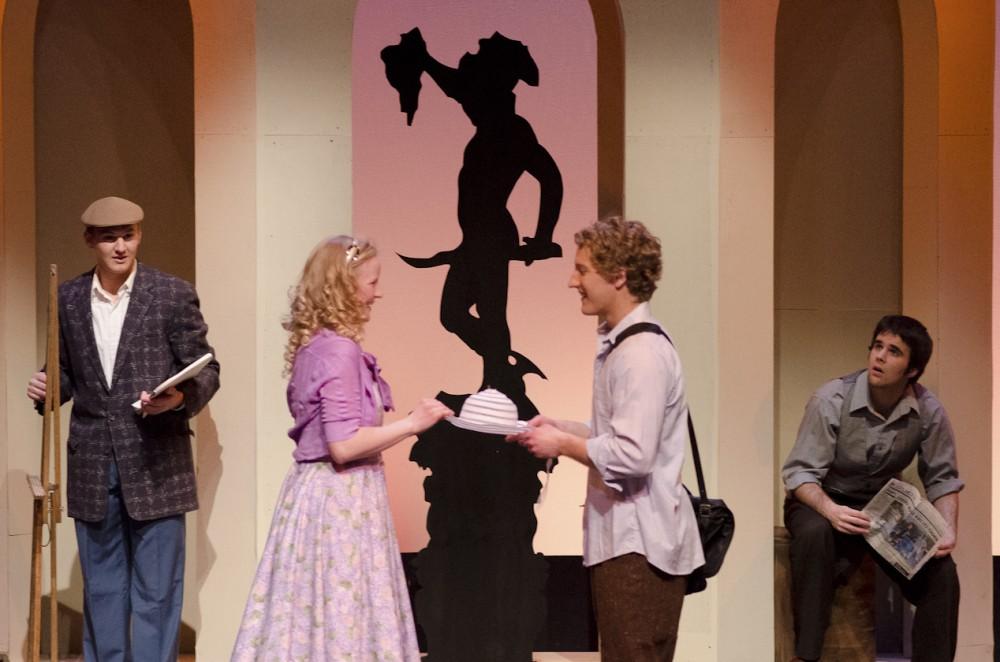GV opera theater debuts Broadway-style ‘The Light in the Piazza’

GVL / Bo Anderson Lights in the Plaza: Premiering February 3rd at 7:30pm
Feb 2, 2012
The student-acted “The Light in the Piazza,” which combines a Broadway-style contemporary love story with the musical tact of the opera, debuts tonight at the Grand Valley State University Louis Armstrong Theatre.
The GVSU Opera Theater production will run six nights at GVSU’s Allendale Campus, with a live orchestra performing tonight and Friday and Feb. 10 and 11.
Tickets for the production, which begins at 7 p.m. today and Friday and Feb. 10 and 11 and at 2 p.m. on Sunday and Feb. 12, are $6 for students, $12 for faculty, staff, alumni and seniors and $14 for community members. They can be purchased at the Louis Armstrong Theatre Box Office at (616) 331-2300 or through Star Tickets at www.startickets.com/event.php?event=2560.
“Unlike most stage shows in America, ‘Light in the Piazza’ has a uniquely European flavor,” said Anthony Lajoye, who plays the father of the male love interest Fabrizio.
Student actors portraying characters like Lajoye’s old Italian man face challenges beyond simply singing and acting.
“The challenges aren’t so much the singing because Grand Valley has great singing,” said Dale Schriemer, artistic director of GVSU opera theater. “The challenge is students playing people who are older than they are. They have to be bilingual, and act in two languages, and sing in two languages.”
The story is set in 1950s Italy, but a GVSU audience will find no trouble connecting to the story line, Schriemer said.
“College people falling in love, you know, it’s what happens,” he said. “It’s just two young people falling in love. And how do you do that when you don’t know how to say the right thing?”
The play is about how much beauty there is in the Italian culture, and how an American responds to that culture, Schriemer said. The Broadway-like style of the show makes the setting more accessible.
“It’s more accessible like a Broadway show would be, compared to a pure opera,” said Jack Lane, box office manager. “They’re doing more current shows.”
The American student performers have to make a similar response.
“The most challenging thing about opera opposed to straight drama is that you must feel the emotion and convey that emotion to your audience within an allotted amount of time because much of the dialogue is underscore,” Lajoye said. “In some cases, you may only have one or two measures of music to clearly show the audience, through body language, what your character is feeling. You must be able to key into an emotion on demand.”
The support of cast mates is key in the transition of performance style and language, Lajoye said.
“The cast has been extremely supportive of each other throughout the whole show,” he said. “Over the last month, which was the length of our rehearsal period, we have learned to think as a team, we know the strengths and weaknesses of one another and we play toward the strengths. It has been lovely working with this group of people, they are all dedicated to their roles and it makes long rehearsals seem shorter.”























